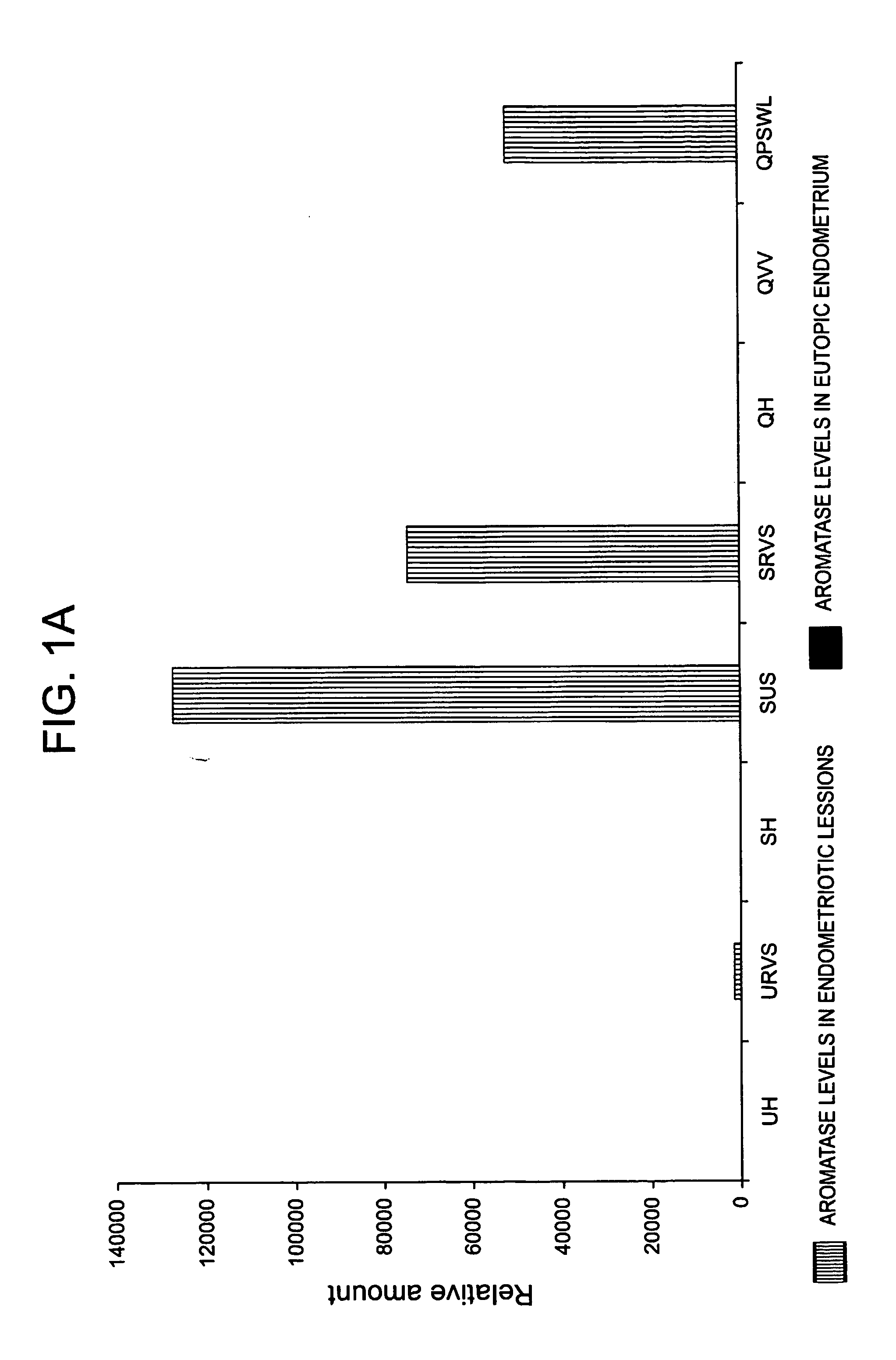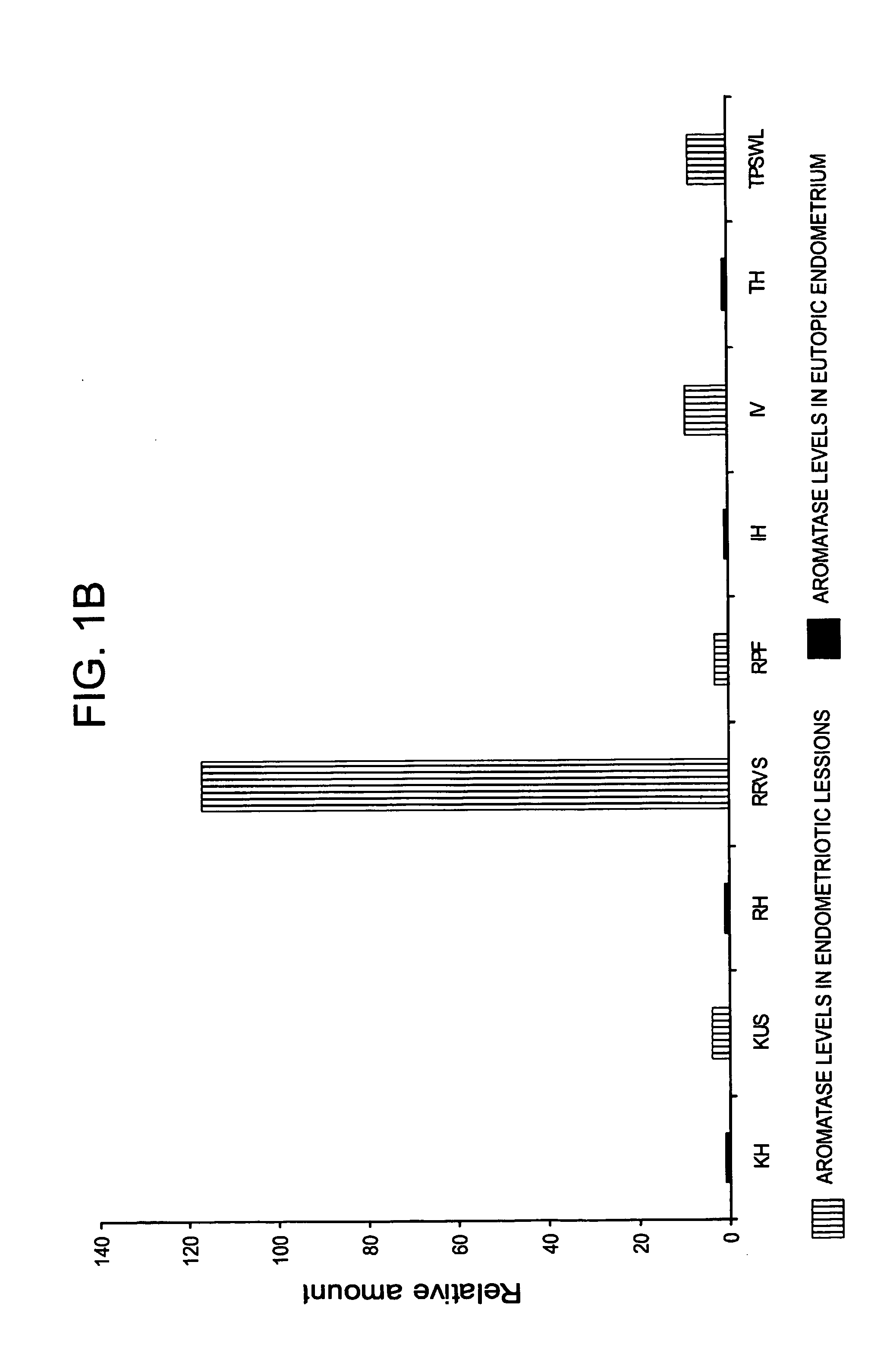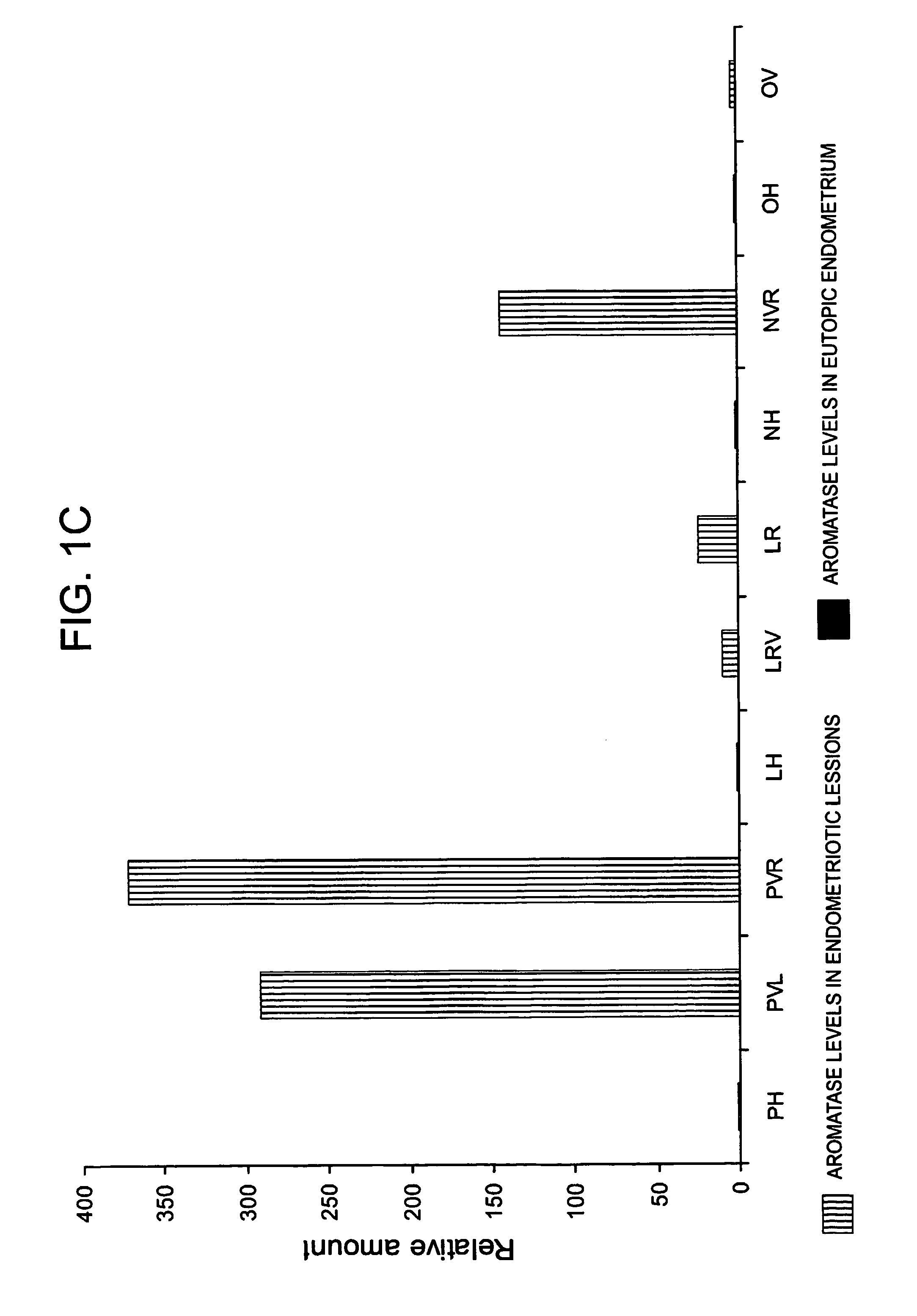The invention exploits the highly vascularised nature of the vaginal
mucosal tissue (which leads to a copious
blood supply) to deliver an
aromatase inhibitor composition to localised areas and the underlying tissues that are diseased. Delivery of the
aromatase inhibitor through the tissue wall is thus fast and this
route of administration facilitates achieving a concentration of
drug that is effective to treat or prevent the disorder. A significant effect of the invention is that intravaginal delivery allows inhibition of the local lesional production without significantly affecting the circulating levels which have been produced by the ovaries. This results in minimal side-effects and will allow for longer term treatment than current therapies. The lowering of the locally high levels of oestrogen will reduce growth of lesions and also lower the rates of production of inflammatory mediators which lead to the major symptom of pain.
is that intravaginal delivery allows inhibition of the local lesional production without significantly affecting the circulating levels which have been produced by the ovaries. This results in minimal side-effects and will allow for longer term treatment than current therapies. The lowering of the locally high levels of oestrogen will reduce growth of lesions and also lower the rates of production of inflammatory mediators which lead to the major symptom of pain.
The vasculature of the
female reproductive tract consists of a number of vascular plexuses of different origin, and there are anastomoses between a number of the key vessels including the vaginal, ovarian and uterine arteries as well as between the uterine and deep perineal branches of the pudendal
artery. For example, the arterial supply to the
vagina is from the vaginal
branch of the uterine
artery, occasional vaginal branches of the internal iliac arteries, possible twigs from the middle rectal arteries, and branches from the internal pudendal arteries. These vaginal arteries course along the lateral
vaginal walls, along the walls of the uterus, and anastomose with the ovarian
artery. The ascending branches of the uterine artery lead to the tubal arterial
branch and anastomoses with the ovarian artery. Venous return from the vaginal venous
plexus drains into the internal iliac
vein, and the uterine venous return is along uterine veins, which generally parallel the arterial supply. Lymphatic drainage of the
vagina drains into the external and internal iliac nodes, as well as into the superficial inguinal nodes. Lymphatic drainage of the uterus parallels the uterine
blood supply.
The absorption of drugs through the
vaginal mucosa and into the systemic vasculature is known, and it has been observed by others that a “uterine
first pass effect” occurs whereby, for example, the ovarian and
uterine tissue levels of some drugs given vaginally are higher than would be expected from
oral administration of the same doses. The exact mechanism of this “first uterine pass” effect is not yet fully understood. Four hypotheses can be put forth to explain the uterine
first pass effect: (1) transvaginally administered drugs may transit to the uterus and other local tissues through the local
circulatory system; (2) there may be direct
diffusion of
drug into the uterus and other local tissues; (3) drugs may reach the uterus through the lymphatics; or (4) a “counter-current” redistribution of
drug may occur between arteries and veins.
By an “oestrogen-dependent proliferative disorder of the uterus” is meant any oestrogen-dependent non-malignant disorder that occurs in females that stems from
uterine tissue. Particular examples of oestrogen-dependent proliferative disorders of the uterus that are included within the terms of the invention are
endometriosis and
uterine fibroids. Humans are preferred patients for treatment, although non-human mammals, such as domesticated and companion animals, may also be treated.
Endometriosis is the name given for the occurrence of
endometrium tissue, found at ectopic sites in the body. Endometriotic lesions may be determined histologically using markers or by looking for endometrial glands and stromal elements in tissue at ectopic sites. Although this
tissue type may be in any
anatomical location, it is generally to be found in the region of the
ovary,
peritoneum, or recto-
vagina and it is endometriotic lesions in these locations that may be particularly beneficially treated according to the method of the present invention.
 Login to View More
Login to View More 


